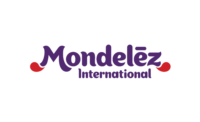Tom Clark, associate principle engineer at Mondelez International, was the technical lead on the company’s recent glass-to-plastic conversion for the Planters peanut jar, which accounted for 27% of Kraft’s five-year, 100 million-lb. packaging-material-reduction goal.
Going forward, Mondelez is looking to expand its geographical presence with a particular focus on Brazil, Russia, India and China (BRIC countries). “We do realize that developing markets have different needs and there are different consumer preferences,” Clark says.
From a packaging viewpoint, this means assuring product quality and developing innovation for customers and consumers, which will allow the company to grow in new markets across the globe. To deliver on its goal of expanding its global presence, Clark says the company is changing how it works with suppliers to design packaging. In so doing, it says it needs to shake up things in packaging development and how it takes place.
Clark explains that the traditional packaging development runs basically like this: Businesses ask for more productivity; the packaging developer solicits a supplier; the supplier produces three to five film packages; the packaging developer runs a trial at the plant and tests with sensory panel for six to 12 months; and then a final decision is made on the package. This entire process is often repeated in one to five years, which is not only time-consuming, but also can often involve overdesign.
Clark suggests that companies adopt a methodical approach that “can improve speed to market, while migrating risk and still capture more value. This approach can pinpoint a failure mode or limiting factor.”
New approaches are being adopted for developments including new packaging formats, justifying equipment changes and addressing both competitive and consumer claims. This “renewed packaging” focus allows the company to better understand its product requirements, Clark says. “It's about doing it right the first time,” he adds.
Source: www.plasticstoday.com





